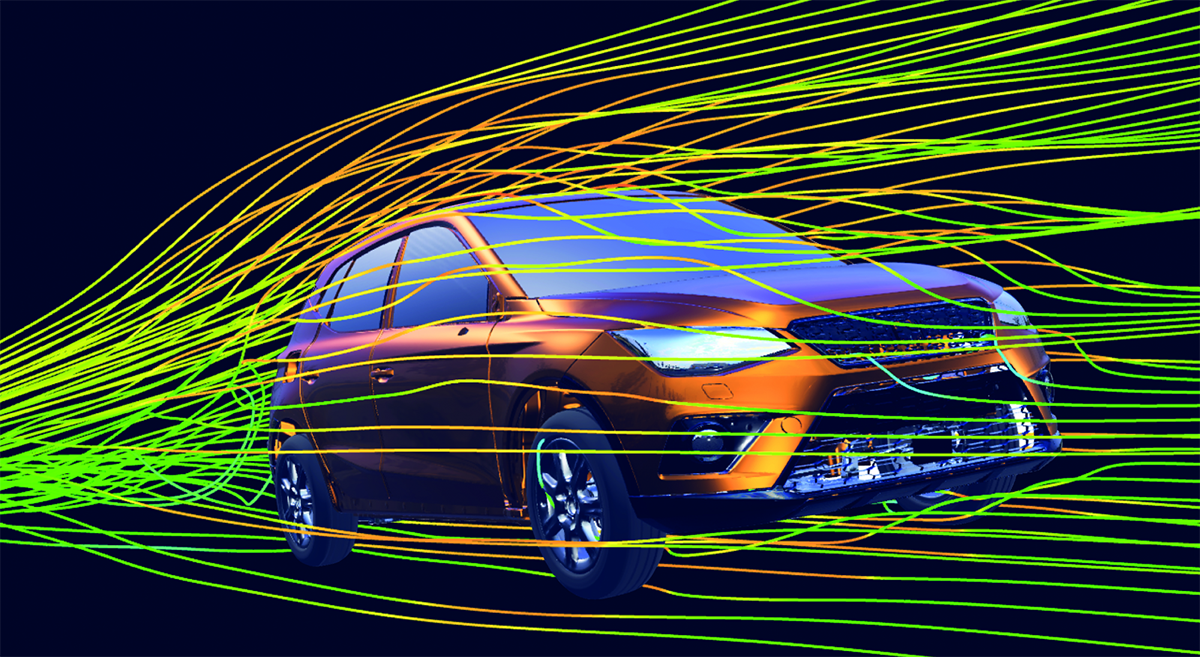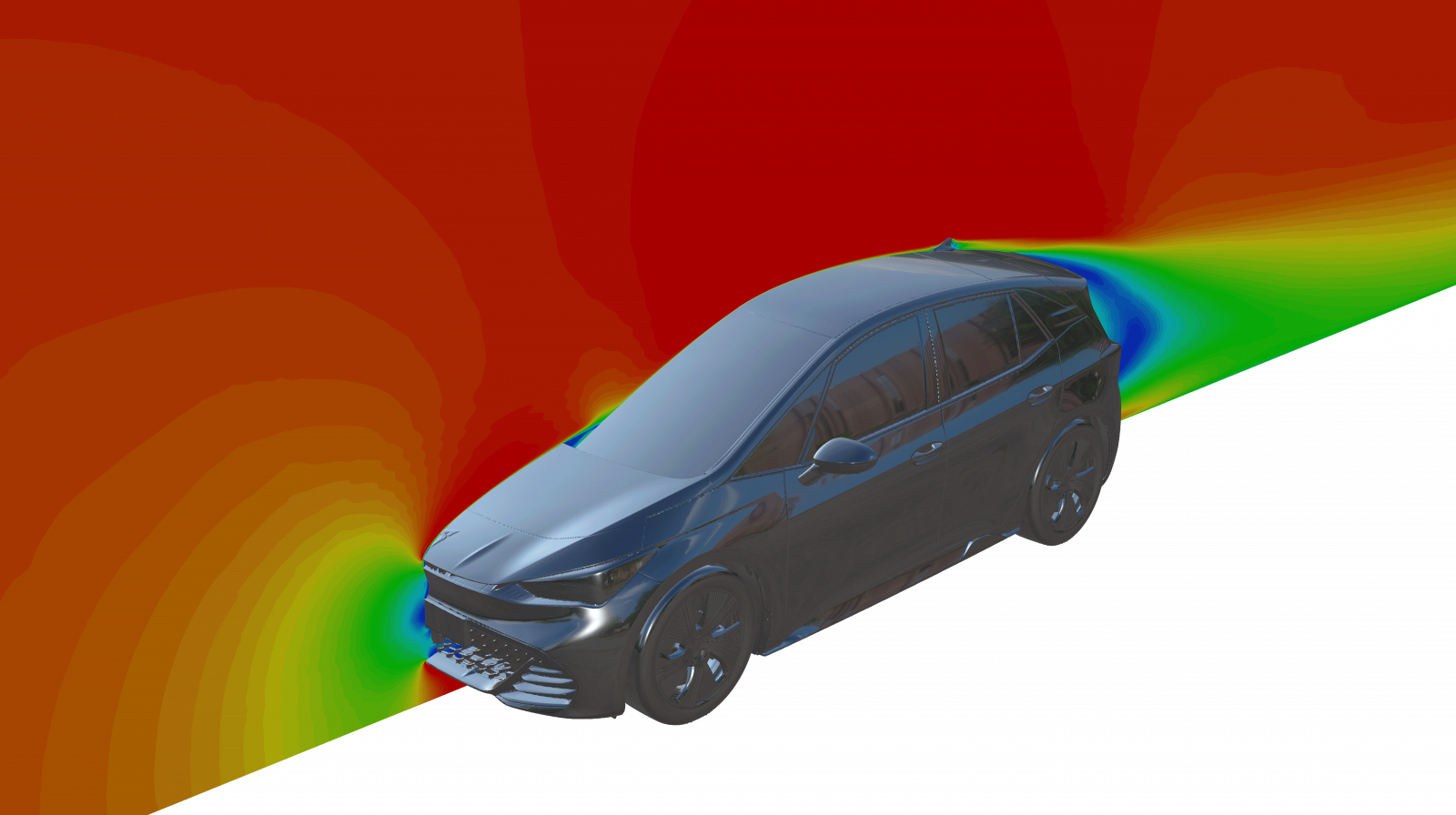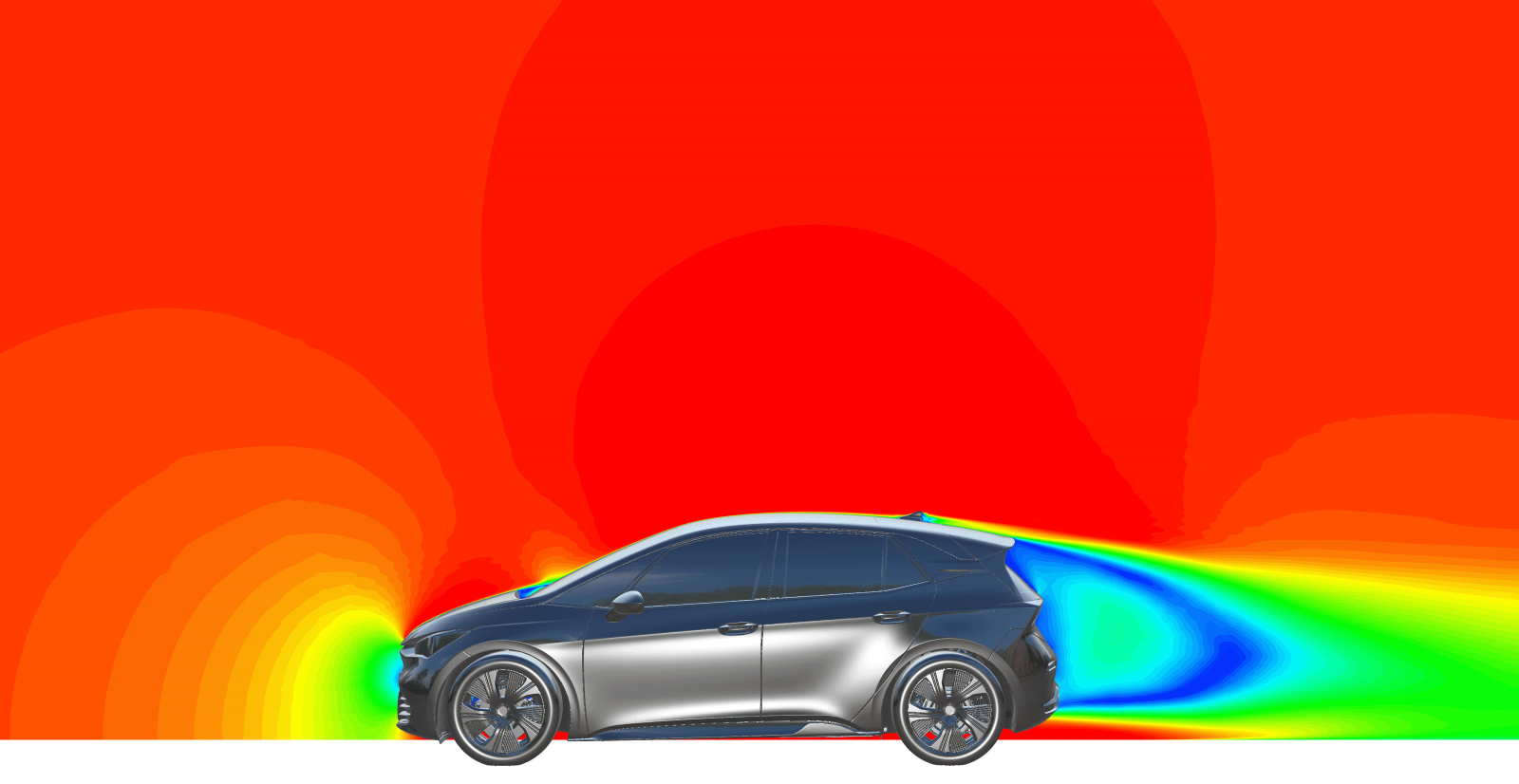Aerodynamic analysis
Timeline
2017-2023Sector
Automotive and railwayScope
Analysis and optimisation of aerodynamics in the automotive and railway sectorsBACKGROUND
All ground vehicles are subjected to the action of the air, which directly affects their operation, both because it resists movement (aerodynamic resistance) as well as due to other aerodynamic loads (cross winds, down force, etc.). This gives way to different particularities that affect the proper operation of the new designs.
To minimise adverse circumstances and promote the favourable ones we must use an analysis methodology and an advance level of mathematical modelling with a high degree of detail in order to provide optimum results. SOLUTE carries out these analyses, ensuring an efficient aerodynamic behaviour focused on the required needs.
The automotive as well as the railway industry continuously design and develop new vehicles that are more competitive and therefore, the goal is to improve their aerodynamic performance, which has a direct effect on the operating costs. The most aerodynamically efficient vehicles consume less fuel or electricity, thus lowering the associated costs.
Other aerodynamic characteristics to consider are the noise and vertical force. The first is especially relevance for the comfort of the occupants and the second is especially important in vehicles that operate at high speeds such as sports cars or high speed trains.
One of the key aspects of this development process is the interaction of the vehicle in motion with the air that surrounds it. From SOLUTE, a series of analyses and studies are carried out prior to the experimentation with prototypes, with the aim of ensuring each vehicle meets the requirements that will guarantee the best results in terms of energy efficiency, emissions and dynamics.
RESULTS
The tasks of simulation and analysis of your results allow, in a very dynamic way, adopting alternatives to the design or concept when the results are unsatisfactory, as well as the optimisation of the geometries. This way, analyses of great added value are provided on the aerodynamic behaviour of the vehicle, focused on values of interest such as the aerodynamic resistance, accompanied by a detailed analysis of the results, to include other parameters (distribution of speeds or efforts in the model).
EXPERIENCE
SOLUTE has several years of experience as it has been developing new car models since 2017, where its participation has been essential in achieving the aerodynamic efficiency objectives set by manufacturers.
SOLUTE has also contributed in the analysis and design of other ground transport vehicles, primarily buses. The shapes of essential components have been optimised; components such as rear view mirrors, diffusers and underside diffusers.
The same methodology is easily applicable to other areas such as railroads or aviation.
To carry out these calculations, commercial codes (ANSYS, ALTAR) as well as free use codes (OpenFOAM) are used, over which, even with differences in their origin, good practices in modelling standards prevail as well as the criteria of expert analysts and the basis of extensive experience.
METHODOLOGY
The analysis is carried out with CFD (Computational Fluid Dynamics) tools, using the Finite Volumes Method (FVM) or the Finite Elements Method (FEM), depending on the solver that is chosen. To carry out these calculations, commercial codes (ANSYS, ALTAR) as well as free use codes (OpenFOAM) are used, over which, even with differences in their origin, good practices in modelling standards prevail as well as the criteria of expert analysts and the basis of extensive experience.
Models should be created that are based on the geometry of the analysis object and in the case study to simplify and individualise the model that allows reaching a compromise between the accuracy of the results and the computational load. In most situations, stationary simulations RANS (Raynolds-Averaged Navier Stokes) or their transitory variable URANS (unsteady RANS) are used and sometimes, more expensive and accurate simulations may need to be used such as LES (Large Eddy Simulation). The extensive experience demonstrated in the sector helps to select the ideal turbulence closure model, among which, k-ω, k-ε and its variants are worth mentioning.
Based on a scenario that considers all the physics and all the constraints of the analysis that is to be addressed, it is possible to calculate and determine the desired aspects of the model, such as the aerodynamic resistance, the air flow that travels across a specific region, the pressure or speed disturbances or the forces acting on the vehicle. In addition to a quantitative result, the tools that are used allow evaluating the qualitative behaviour of the evaluated systems, detecting the areas that cause undesired behaviours and the regions that have potential for improvement.
For this, it is essential that we have the skills and know-how of expert engineers on the matter, thanks to whom it is possible to offer an evaluation of the results along with proposals for improvements in the studied design.
Wind
Energy and weather forecast for renewable operators
Weather and energy forecast service through the training of artificial intelligence algorithms.
Others
Air conditioning for working safety in industrial environments
Study and optimisation of the air conditions in industrial environments to guarantee compliance with the current occupational risk prevention regulation.


